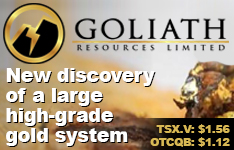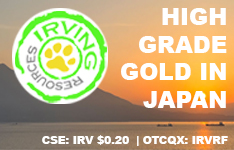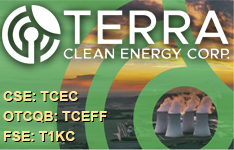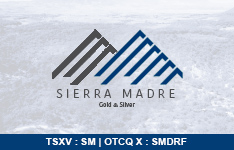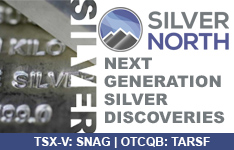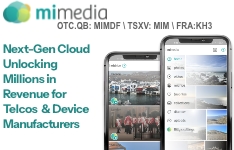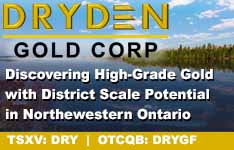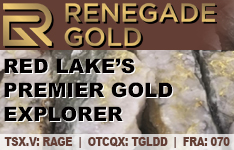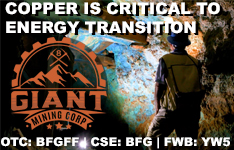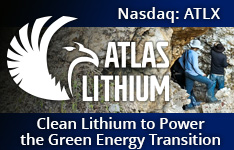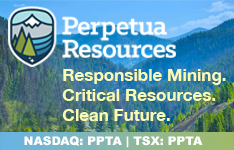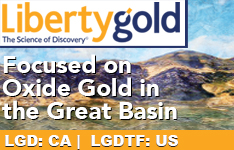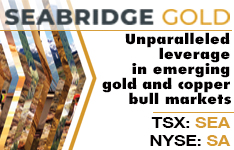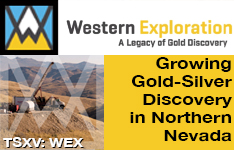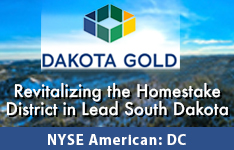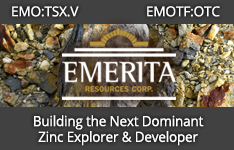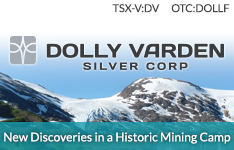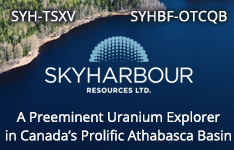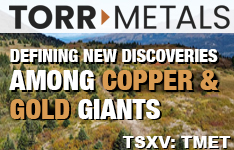Blockchain technology has done something extraordinary — not just in terms of innovation, but in terms of liberation, wrote NatGold Digital Ltd.'s Founder and Chief Executive Officer Anthony Wile in a June 7 opinion piece.
For the first time, the world is seeing alternatives to fiat money that are independent of central bank control, emerging through consensus rather than decree. This is the territory where NatGold is stepping into; a space that is both open and revolutionary, Wile said.
"This is where dollar-backed stablecoins and other tokenized representations of the 'same old system' are increasingly exposed for what they are: extensions of the legacy architecture," he said. "Digital wallpaper covering the same cracked foundation. They're not reformation. They're camouflage."
Yet, there's a palpable yearning in the world for a different path, a sentiment that gold buyers have long championed, according to Wile. Before the rise of crypto, influential figures like Harry Browne and G. Edward Griffin inspired many with their critiques of a central bank-controlled monetary system.
The conversation about monetary reform once moved slowly, constrained by the limitations of traditional media, but everything changed with the advent of the internet. The internet sparked an information revolution similar to the Gutenberg press, empowering individuals to seek and disseminate truth.
This turn of events has cultivated a host of new monetary systems — Bitcoin, gold-backed tokens, and stablecoins — each driven by the collective recognition that the current system is flawed.
Bitcoin, regardless of opinions about it, symbolizes a widespread yearning for change in monetary systems; it embodies hope. Similarly, gold has stood as a powerful hedge against government overreach for generations, representing the people's desire for financial autonomy.
'From Nature's Vault to Your Wallet'
NatGold's business model leverages blockchain technology to transform in-ground gold assets into digital tokens. The company has positioned itself at the intersection of three major global trends: record-high gold demand, exponential growth in ESG (Environmental, Social, and Governance) investing, and the rapid rise of digital asset tokenization.
At the core of this strategy is the NatGold Token, which represents one ounce of verified in-ground gold that eliminates traditional mining hurdles such as high extraction costs, permitting delays, and environmental disruption.
"We're not here to compete with gold," Wile wrote in his piece. "We don't need to extract gold from the earth to give it value. Nor do we need to waste vast energy resources to prove existence. We don't need vaults. We don't need miners. We don't need middlemen."
The tokens are backed by verified in-ground resources validated by geological standards, secured by the U.S.-regulated blockchain infrastructure, and digitally mined.
There is "no physical extraction, no diesel-powered machinery, and no environmental disruption," the company wrote on its website. "Communities are included, not displaced — and the gold stays in the ground, untouched but fully verified."
"From nature's vault to your wallet — NatGold fuses the timeless trust of gold with the programmability of digital assets," it continued.
Gold Is Keeping Up With the Times
In a fireside chat with Bretton Woods Committee, Securitize chief executive officer and cofounder Carlos Domingo said that tokenization is not that different than ownership of certain assets now, like deeds for homes and other real estate or securities recorded by an issuer.
"Tokenization is nothing else but a very efficient ledger that is that is public" but also digitally secure, he said.
Much of what asset managers do is to raise and invest money, he said. "But they also have to record the ownership of everything," he said. "They have to move it around, and that turns out to be a very complicated process with a lot of intermediaries involved, with a lot of reconciliation errors, manual processes, etc."
"Gold needs to keep up with the times. How?" asked entrepreneur, business author, and seasoned capital markets professional Alex Tapscott, who co-wrote the bestselling book Blockchain Revolution: How the Technology Behind Bitcoin is Changing Money, Business, and the World, and the more recent Wall Street Journal Bestseller Web3. "The answer lies in blockchain, the technology behind Bitcoin. Blockchains allow us to program a digital coin or 'token' to represent anything of value — stocks, bonds, art, gold — and make it accessible to anyone without the need for intermediaries."
The global Bitcoin market size was valued at US$17.05 billion in 2021 and is expected to expand at a compound annual growth rate (CAGR) of 26.2% from 2022 to 2030, Grand View Research said.
Transforming the Sector
*On June 20, after NatGold partner company Great Eagle Gold Corp. rebranded as NatBridge Resources Ltd. (NATB:CSE; NATBF:OTC), Technical Analyst Clive Maund reaffirmed his viewpoint that the tokens are poised to transform the gold mining sector.
This digital framework tackles enduring issues in the mining industry, such as excessive operational expenses and inadequate ESG performance, he noted. He stressed that "all mining companies need to do is locate the gold. They won’t have to extract it or refine it, significantly lowering costs."
Maund said the "revolutionary" approach allows valuation of in-ground gold without the need for excavation.
From a technical perspective, Maund observed a long-developing bullish triangle on NatBridge's stock chart, pointing out that "the price and its moving averages are converging, with the latter turning bullish," which, along with robust volume signals and a persistent upward trend in the Accumulation line, suggested an "upside breakout into a new bull market." He maintained his "Immediate Strong Buy" rating and set price targets between CA$0.44 and CA$0.46, following the previous high close to CA$0.58.
The company's stance at the juncture of gold, ESG investments, and asset tokenization continued to draw technical and strategic attention, highlighting that the model of "digital gold mining" offers a unique forward path, Maund wrote.
The rebranding from Great Eagle Gold to NatBridge Resources signifies a profound shift in business strategy, harnessing blockchain technology to convert in-ground gold reserves into digital tokens. The company has strategically placed itself at the convergence of three significant global trends: unprecedented gold demand, rapid expansion of ESG (Environmental, Social, and Governance) investing, and the swift rise of digital asset tokenization.
The Catalyst: Gold Falls, But Is Still in Play
Gold prices fell Tuesday by more than 1% as both Israel and Iran reportedly stuck to a ceasefire agreement, FX Street reported on Wednesday.
Additional pressure on gold prices also stems from expectations that Fed Chair Jerome Powell may not be in a hurry to implement further rate cuts, considering inflation continues to exceed long-term targets and the Fed is observing the unfolding impact of import tariffs, the report said.
According to a CoinTelegraph piece from April, tokenized gold volume hit US$1 billion for the first time since the banking crisis.
The expected revenue for the global cryptocurrency market is set to reach an impressive US$45.3 billion during this timeframe, according to Statista. The average earnings for individual participants are predicted to be US$52.70 in 2025, with the total number of participants in the entire market expected to exceed 861 million, as noted by Statista.
 Streetwise Ownership Overview*
Streetwise Ownership Overview*
NatBridge Resources Ltd. (NATB:CSE; NATBF:OTC)
Experts have indicated that the bull market in precious metals is expected to continue. Garth Friesen reported for Forbes on March 15 that Jeffrey Gundlach, CEO of DoubleLine, stated, "I think gold will make it to US$4,000. I'm not sure that'll happen this year, but I feel like that's the measured move anticipated by the long consolidation at around US$1,800 on gold."
And according to an April 10 post on Goldfix, Goldman Sachs has revised raised the upper boundary of its forecast range for the end of the year to US$3,520 an ounce and even introduced a "tall-risk scenario" as high as US$4,500 an ounce.
Ownership and Share Structures
NatGold is a private company. According to Refinitiv, 29% of NatBridge is owned by management and insiders. Of them, Azim Dhalla owns the most with 25.4% and Andrew Fletcher holds 1.69%. The rest is retail.
The company has 50.26 million shares outstanding and a market cap of CA$13.57 million. The 52-week range for GEGC is CA$.07-0.75.
| Want to be the first to know about interesting Technology, Gold and Special Situations investment ideas? Sign up to receive the FREE Streetwise Reports' newsletter. | Subscribe |
Important Disclosures:
- As of the date of this article, officers and/or employees of Streetwise Reports LLC (including members of their household) own securities of NatGold Digital Ltd. and NatBridge Resources Ltd.
- Steve Sobek wrote this article for Streetwise Reports LLC and provides services to Streetwise Reports as an employee.
- This article does not constitute investment advice and is not a solicitation for any investment. Streetwise Reports does not render general or specific investment advice and the information on Streetwise Reports should not be considered a recommendation to buy or sell any security. Each reader is encouraged to consult with his or her personal financial adviser and perform their own comprehensive investment research. By opening this page, each reader accepts and agrees to Streetwise Reports' terms of use and full legal disclaimer. Streetwise Reports does not endorse or recommend the business, products, services or securities of any company.
For additional disclosures, please click here.
* Disclosure for the quote from the Clive Maund article published on June 20, 2025
- For the quoted article (published on June 20, 2025), the Company has paid Street Smart, an affiliate of Streetwise Reports, US$3,000.
- Author Certification and Compensation: [Clive Maund of clivemaund.com] is being compensated as an independent contractor by Street Smart, an affiliate of Streetwise Reports, for writing the article quoted. Maund received his UK Technical Analysts’ Diploma in 1989. The recommendations and opinions expressed in the article accurately reflect the personal, independent, and objective views of the author regarding any and all of the designated securities discussed. No part of the compensation received by the author was, is, or will be directly or indirectly related to the specific recommendations or views expressed
Clivemaund.com Disclosures
The quoted article represents the opinion and analysis of Mr. Maund, based on data available to him, at the time of writing. Mr. Maund's opinions are his own, and are not a recommendation or an offer to buy or sell securities. As trading and investing in any financial markets may involve serious risk of loss, Mr. Maund recommends that you consult with a qualified investment advisor, one licensed by appropriate regulatory agencies in your legal jurisdiction and do your own due diligence and research when making any kind of a transaction with financial ramifications. Although a qualified and experienced stock market analyst, Clive Maund is not a Registered Securities Advisor. Therefore Mr. Maund's opinions on the market and stocks cannot be only be construed as a recommendation or solicitation to buy and sell securities.








